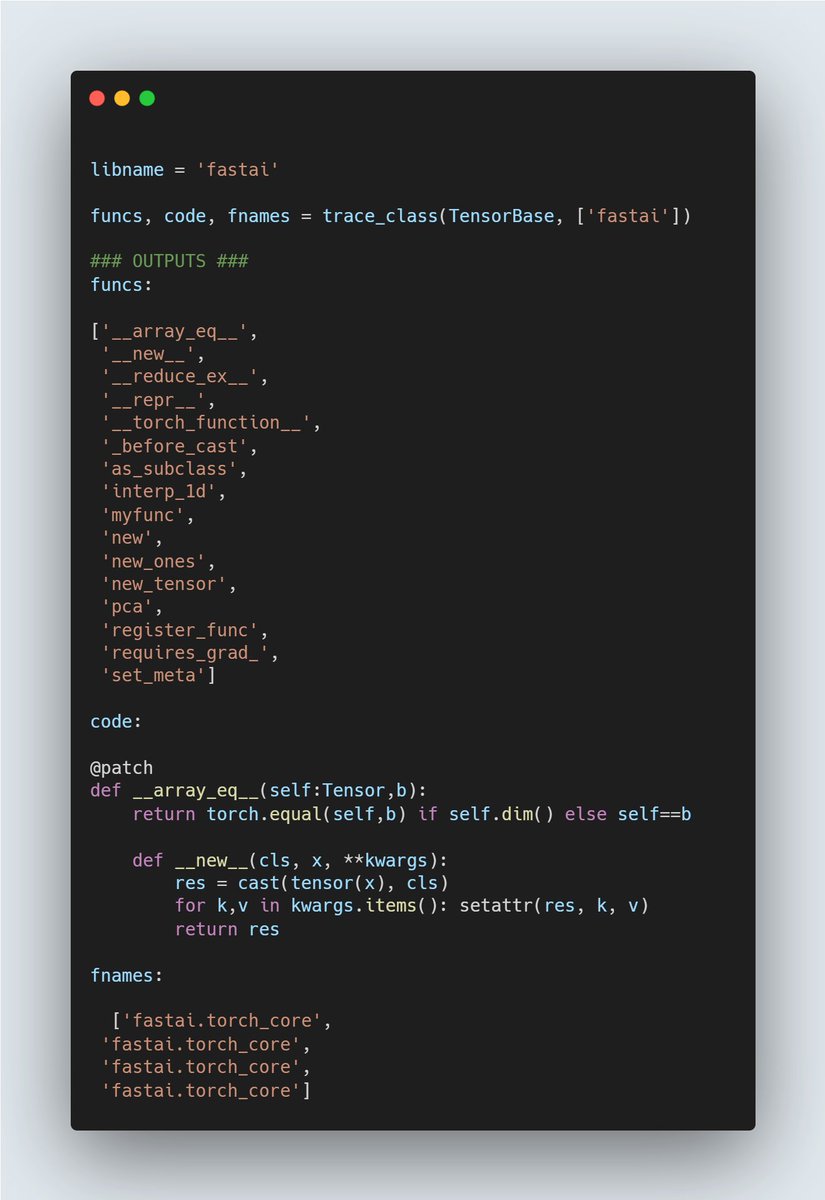
I'm going to be releasing a video extremely soon on my journey through fastai, open source, and how it all merges together. In the meantime, I wanted to outline below the Software Design and Development program my school (@UWF) offers semester by semester: 🧵
Semester 1:
- C++ Programming. Getting you used to the nuances of memory, objects, variables, and so forth
- C++ Programming. Getting you used to the nuances of memory, objects, variables, and so forth
Semester 2:
- Algorithm and Program Design. Using Github and more typical "algorithms" that traditional SE tracks would see
- Discrete Structures: Computer math
- Database Systems: Using flat-file databases and understanding how they work
Note: From here every class used git
- Algorithm and Program Design. Using Github and more typical "algorithms" that traditional SE tracks would see
- Discrete Structures: Computer math
- Database Systems: Using flat-file databases and understanding how they work
Note: From here every class used git
Semester 3:
- Java Programming: After taking 2 courses in C++, learn how to use Java
- Data Structures & Algorithms 1: A harder alg and prog. Easily one of the hardest in the trek. Traditional "CS" course
- Intro to Computer Organization: Machine coding
- Java Programming: After taking 2 courses in C++, learn how to use Java
- Data Structures & Algorithms 1: A harder alg and prog. Easily one of the hardest in the trek. Traditional "CS" course
- Intro to Computer Organization: Machine coding
Semester 4:
- Operating System Fundamentals: How do OS's work
- Server Side Programming: Building the backend of websites (Node.JS, etc)
- Intermediate Programming: More advanced Java programming
- Operating System Fundamentals: How do OS's work
- Server Side Programming: Building the backend of websites (Node.JS, etc)
- Intermediate Programming: More advanced Java programming
Semester 5:
- Network Fundamentals: How do networks work, the type of networks, how do they communicate, etc
- Secure software development: How do you develop safe software and what do you look out for
- Network Fundamentals: How do networks work, the type of networks, how do they communicate, etc
- Secure software development: How do you develop safe software and what do you look out for
Semester 5.5 (Summer):
- Linus System Administration: Fully utilizing the Linux environment and bash
- Linus System Administration: Fully utilizing the Linux environment and bash
Semester 6:
- Software Engineering 1: A team based semester-long project fully encompassing most of a real world scenario such as project reports, code review, sprints, and so forth
- Dist Software Arch: Multiprocessing and the nuances with that
- Software Engineering 1: A team based semester-long project fully encompassing most of a real world scenario such as project reports, code review, sprints, and so forth
- Dist Software Arch: Multiprocessing and the nuances with that
Semester 7:
- Software Engineering 2: Taking SE1 further, bigger projects, bigger scopes, more heavy on writing good tests and solid project documentation (through reports)
- Client-Side Programming: Front-end web development with React, Node, etc
- Software Engineering 2: Taking SE1 further, bigger projects, bigger scopes, more heavy on writing good tests and solid project documentation (through reports)
- Client-Side Programming: Front-end web development with React, Node, etc
Semester 7.5 (Summer):
- Mobile Programming: Learning Kotlin and Android Studio
- Mobile Programming: Learning Kotlin and Android Studio
Semester 8: (Currently)
- SE Management: Handling released software, Docker, Github Actions, and larger-scoped projects (such as many micro-services, etc)
- Capstone: Another class similar to the SE track, but everyone in your team is a different major
- SE Management: Handling released software, Docker, Github Actions, and larger-scoped projects (such as many micro-services, etc)
- Capstone: Another class similar to the SE track, but everyone in your team is a different major
Hopefully folks can look at this program, see where gaps exist in what you know, and use it for inspiration and ideas to help strengthen your skills further
Please feel free to ask any questions you have on any of it!
Please feel free to ask any questions you have on any of it!
cc @varcharr as I know you were particularly interested in this🙂
• • •
Missing some Tweet in this thread? You can try to
force a refresh




